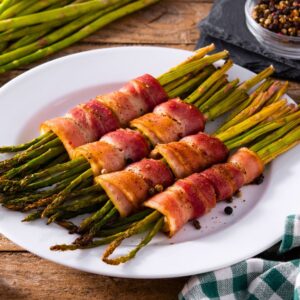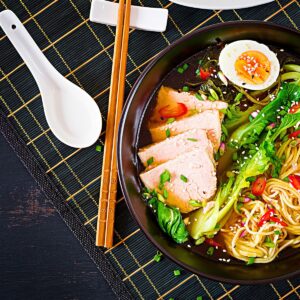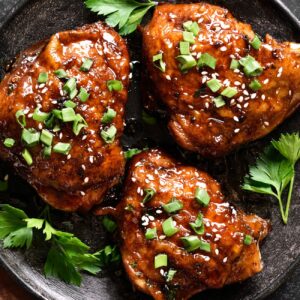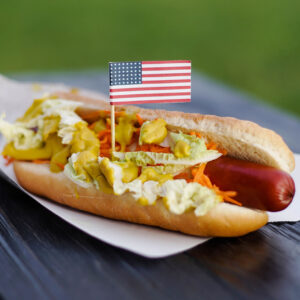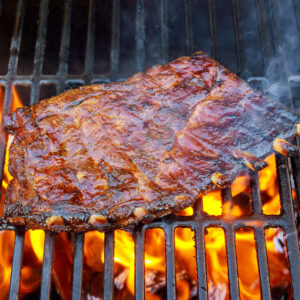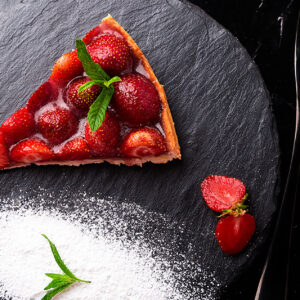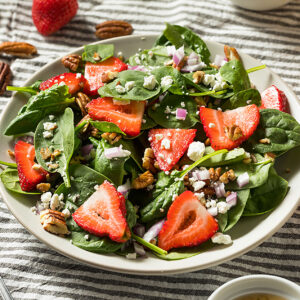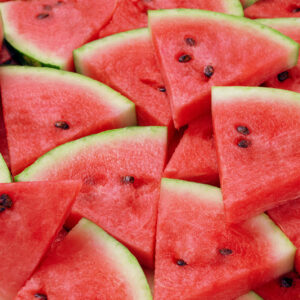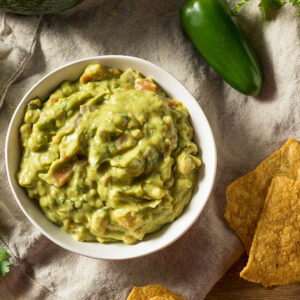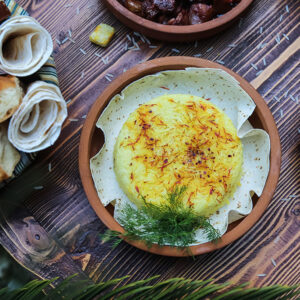The history behind gingerbread dates back many centuries and involves more than just one country or continent. Continue reading to learn more about the evolution of gingerbread.

The history behind gingerbread dates back many centuries and involves more than just one country or continent. Continue reading to learn more about the evolution of gingerbread.
Were you aware that every second Saturday in December is marked as National Gingerbread Decorating Day? If you’ve ever been curious about the origins of gingerbread men, the significance behind gingerbread houses, and why gingerbread has become synonymous with the Christmas festivities, then you’ve arrived at the perfect destination. Join us as we explore the fascinating history of this delectable treat.
Uncovering Gingerbread’s Roots
The term “gingerbread” has its etymological roots in the Latin word “zingiber” (derived from the Old French word “gingembras”), denoting preserved ginger.
Prior to delving into the topic of gingerbread, it’s essential to delve into the history of ginger, the spice. Its origins can be traced back to Maritime Southeast Asia, and it was among the earliest spices to be exported from Asia through the ancient spice trade. Over time, ginger has been regarded for its medicinal attributes and properties. To this day, it is utilized in the treatment of certain ailments, such as consuming ginger ale to alleviate nausea.
While the ancient Greek and Egyptian civilizations had their own rendition of gingerbread, the modern version we are familiar with today was not introduced until 992 CE. It was an Armenian monk named Gregory of Nicopolis who brought this form of gingerbread to Europe.
Since then, gingerbread has undergone various adaptations and is now available in an array of different varieties, ranging from moist cake to hard ginger biscuits.
The Original Gingerbread Man
During the 16th century, Queen Elizabeth I, who ruled from 1533 to 1603, presented her guests, suitors, and visiting dignitaries with gingerbread men as gifts.
Although the Queen did not invent gingerbread, her concept of creating gingerbread men was a novel and pioneering idea.
Queen Elizabeth I had the gingerbread cut into the shape of gingerbread men and decorated to bear a striking resemblance to her guests. The novelty of having these gingerbread men made in the likeness of her visitors greatly impressed them!
Following the Queen’s creative take on this treat, the gingerbread man cookie surged in popularity throughout England. Women, in particular, began to have gingerbread men crafted and adorned to represent the husbands they aspired to wed.
Though superstitious, it was thought that if an unmarried woman consumed one of these gingerbread husbands, it would help her find a suitable partner.
The Original Gingerbread House
During the 16th century in Germany, gingerbread houses were first invented. These houses featured walls made of gingerbread and were embellished with decorative foil and gold leaf.
The publication of the Grimm’s fairy tale “Hansel and Gretel” in 1812 played a pivotal role in elevating the prominence of gingerbread houses. The story depicts two lost children who chance upon a house constructed entirely out of candy.
Nowadays, gingerbread houses are decorated with a vast range of sweets and candies, far beyond the use of gold leaf and foil. A special type of royal icing is often employed to secure the various parts together.
Germany – The Worlds Gingerbread Capital
Germany not only gave birth to gingerbread houses but also serves as a hub for gingerbread enthusiasts. Lively street markets are held throughout the country during Christmastime, with Nuremberg holding the title of the gingerbread capital of the world since the 1600s.
Lebkuchen, or gingerbread, comes in two variations in Germany – a soft cookie and a harder one. The latter is often crafted into a heart shape and adorned with romantic messages in icing. They are frequently sold in street markets around Christmas in various German towns and have gained popularity as a symbol of love to be gifted to one’s partner.
The Nuremberg Lebkuchen
Starting in July 1996, Nuremberg’s lebkuchen (known as “Nuremberg Lebkuchen”) obtained protected geographical indication from the European Union. As a result, in order to bear the name “Nuremberg Lebkuchen,” the product must originate from the Nuremberg region and meet specific quality requirements.
This concept is akin to that of Champagne sparkling wine. While sparkling wine can be produced in various locations, only those originating from the Champagne region in France and adhering to particular quality criteria are allowed to be labeled as Champagne.
How Gingerbread Became Associated with the Christmas Holiday
During the 17th century, gingerbread was frequently molded to resemble religious figures, making it a sacred practice.
In the past, gingerbread baking was restricted to specially trained bakers who were members of a guild throughout the year. Only during Christmas and Easter the guild rule was relaxed, allowing anyone to bake gingerbread. However, outside of these festive periods, only guild members were permitted to bake gingerbread.
Today, gingerbread is no longer regarded as a religious or sacred practice and can be baked by anyone at any time. Although gingerbread is now baked year-round, it remains predominantly associated with the Christmas holiday.
Today, gingerbread is widely used for making gingerbread houses, cookies, and even garlands for Christmas trees. It is a common practice for families to come together and bake gingerbread treats during the holiday season. Additionally, Christmas-themed shops offer specially crafted gingerbread cookies that can be gifted and shared among loved ones during this time.
Making Gingerbread
All this talk about gingerbread makes my mouth water. If you have been salivating while reading this, check out the recipes for the classic gingerbread cookie and the spectacular gingerbread pie crust that will take your pumpkin or apple pie to the next level!
Making Your Own Gingerbread Cookies
The ease of making these gingerbread cookies might be as delightful as their taste. This recipe is uncomplicated and bears a resemblance to making snickerdoodles. Moreover, the dough does not require any chilling, which means you can prepare and bake these cookies in a snap! Therefore, if you are running short on time and require a fantastic cookie for a Christmas party or cookie exchange, these gingerbread cookies are an excellent choice.
Gingerbread Cookie Recipe:
Prep Time: 15 minutes
Cook Time: 20 minutes
Servings: 24 cookies
Ingredients:
- ¾ cup unsalted butter softened
- 1 cup raw granulated sugar
- 1 large egg
- ¼ cup molasses
- 2 ½ cups all-purpose flour
- 2 tsp baking soda
- ½ tsp salt
- 1 tsp ground cinnamon
- ½ tsp ground ginger
- Optional: Use raw granulated sugar to roll cookie dough balls in
Instructions:
- Preheat the oven to 350 degrees Fahrenheit.
- First, mix together butter and sugar until light and fluffy, approximately 2-3 minutes, with an electric mixer.
- Next, add egg and molasses and mix well.
- In a separate bowl, combine flour, baking soda, salt, cinnamon, and ginger, stirring to combine.
- Add dry ingredients to wet ingredients and mix until well combined.
- Form or scoop balls of dough that are slightly smaller than a golf ball. If desired, roll dough balls in granulated sugar after forming. Place them on a baking sheet approximately 2″ to 3″ apart to allow room for cookies to spread.
- Finally, bake for 10-12 minutes, remove from oven, and allow cookies to cool on baking for approximately ten minutes, then transfer to a wire rack to finish cooling.
Chef’s Notes:
- When making the gingerbread cookie dough, if you prefer a strong cinnamon flavor, increase from 1 teaspoon to 2. Additionally, if you prefer a stronger ginger flavor, add 1 to 2 teaspoons instead of the ½ tsp the original recipe calls for.
- Molasses can be substituted for maple syrup, honey, or even dark corn syrup.
Gingerbread Pie Crust Recipe:
Prep Time: 20 minutes
Total Time: 20 minutes
Serves: 10
Tools Needed: Large Mixing Bowl, pastry blender, fork, rolling pin, 8-or 9-inch pie plate
Ingredients:
- 1 ¾ cup all-purpose flour
- 1 tbsp. raw granulated sugar
- 3 tsp. Gingerbread Spice Blend
- ¾ tsp. salt
- ⅔ cup unsalted butter, cold
- 2 tsp molasses
- 5 to 6 tbsp. cold water
Instructions:
- In a large mixing bowl, stir together flour, sugar, salt, and the gingerbread spice blend. Using a pastry blender, cut in butter and molasses until pieces are pea-sized.
- Sprinkle 1 tablespoon of ice water over part of the flour mixture; gently toss with a fork. Push moistened dough to the side of the bowl. Repeat with additional ice water, 1 tablespoon at a time, until all of the flour mixture is moistened.
- On a floured surface, roll pastry from the center to the edge, working to create a thin circle. Ease pastry circle into an 8-or-9-inch pie plate. Trim pie dough to hang 1-to-2-inches over the sides. Crimp edges as desired.
- Fill pie pastry with desired filling and prepare according to recipe instructions.
For recipe and instructions on making this amazing gingerbread pie crust with the all-American classic Pumpkin Pie, click here!
Related Articles

The history behind gingerbread dates back many centuries and involves more than just one country or continent. Continue reading to learn more about the evolution of gingerbread.
Were you aware that every second Saturday in December is marked as National Gingerbread Decorating Day? If you’ve ever been curious about the origins of gingerbread men, the significance behind gingerbread houses, and why gingerbread has become synonymous with the Christmas festivities, then you’ve arrived at the perfect destination. Join us as we explore the fascinating history of this delectable treat.
Uncovering Gingerbread’s Roots
The term “gingerbread” has its etymological roots in the Latin word “zingiber” (derived from the Old French word “gingembras”), denoting preserved ginger.
Prior to delving into the topic of gingerbread, it’s essential to delve into the history of ginger, the spice. Its origins can be traced back to Maritime Southeast Asia, and it was among the earliest spices to be exported from Asia through the ancient spice trade. Over time, ginger has been regarded for its medicinal attributes and properties. To this day, it is utilized in the treatment of certain ailments, such as consuming ginger ale to alleviate nausea.
While the ancient Greek and Egyptian civilizations had their own rendition of gingerbread, the modern version we are familiar with today was not introduced until 992 CE. It was an Armenian monk named Gregory of Nicopolis who brought this form of gingerbread to Europe.
Since then, gingerbread has undergone various adaptations and is now available in an array of different varieties, ranging from moist cake to hard ginger biscuits.
The Original Gingerbread Man
During the 16th century, Queen Elizabeth I, who ruled from 1533 to 1603, presented her guests, suitors, and visiting dignitaries with gingerbread men as gifts.
Although the Queen did not invent gingerbread, her concept of creating gingerbread men was a novel and pioneering idea.
Queen Elizabeth I had the gingerbread cut into the shape of gingerbread men and decorated to bear a striking resemblance to her guests. The novelty of having these gingerbread men made in the likeness of her visitors greatly impressed them!
Following the Queen’s creative take on this treat, the gingerbread man cookie surged in popularity throughout England. Women, in particular, began to have gingerbread men crafted and adorned to represent the husbands they aspired to wed.
Though superstitious, it was thought that if an unmarried woman consumed one of these gingerbread husbands, it would help her find a suitable partner.
The Original Gingerbread House
During the 16th century in Germany, gingerbread houses were first invented. These houses featured walls made of gingerbread and were embellished with decorative foil and gold leaf.
The publication of the Grimm’s fairy tale “Hansel and Gretel” in 1812 played a pivotal role in elevating the prominence of gingerbread houses. The story depicts two lost children who chance upon a house constructed entirely out of candy.
Nowadays, gingerbread houses are decorated with a vast range of sweets and candies, far beyond the use of gold leaf and foil. A special type of royal icing is often employed to secure the various parts together.
Germany – The Worlds Gingerbread Capital
Germany not only gave birth to gingerbread houses but also serves as a hub for gingerbread enthusiasts. Lively street markets are held throughout the country during Christmastime, with Nuremberg holding the title of the gingerbread capital of the world since the 1600s.
Lebkuchen, or gingerbread, comes in two variations in Germany – a soft cookie and a harder one. The latter is often crafted into a heart shape and adorned with romantic messages in icing. They are frequently sold in street markets around Christmas in various German towns and have gained popularity as a symbol of love to be gifted to one’s partner.
The Nuremberg Lebkuchen
Starting in July 1996, Nuremberg’s lebkuchen (known as “Nuremberg Lebkuchen”) obtained protected geographical indication from the European Union. As a result, in order to bear the name “Nuremberg Lebkuchen,” the product must originate from the Nuremberg region and meet specific quality requirements.
This concept is akin to that of Champagne sparkling wine. While sparkling wine can be produced in various locations, only those originating from the Champagne region in France and adhering to particular quality criteria are allowed to be labeled as Champagne.
How Gingerbread Became Associated with the Christmas Holiday
During the 17th century, gingerbread was frequently molded to resemble religious figures, making it a sacred practice.
In the past, gingerbread baking was restricted to specially trained bakers who were members of a guild throughout the year. Only during Christmas and Easter the guild rule was relaxed, allowing anyone to bake gingerbread. However, outside of these festive periods, only guild members were permitted to bake gingerbread.
Today, gingerbread is no longer regarded as a religious or sacred practice and can be baked by anyone at any time. Although gingerbread is now baked year-round, it remains predominantly associated with the Christmas holiday.
Today, gingerbread is widely used for making gingerbread houses, cookies, and even garlands for Christmas trees. It is a common practice for families to come together and bake gingerbread treats during the holiday season. Additionally, Christmas-themed shops offer specially crafted gingerbread cookies that can be gifted and shared among loved ones during this time.
Making Gingerbread
All this talk about gingerbread makes my mouth water. If you have been salivating while reading this, check out the recipes for the classic gingerbread cookie and the spectacular gingerbread pie crust that will take your pumpkin or apple pie to the next level!
Making Your Own Gingerbread Cookies
The ease of making these gingerbread cookies might be as delightful as their taste. This recipe is uncomplicated and bears a resemblance to making snickerdoodles. Moreover, the dough does not require any chilling, which means you can prepare and bake these cookies in a snap! Therefore, if you are running short on time and require a fantastic cookie for a Christmas party or cookie exchange, these gingerbread cookies are an excellent choice.
Gingerbread Cookie Recipe:
Prep Time: 15 minutes
Cook Time: 20 minutes
Servings: 24 cookies
Ingredients:
- ¾ cup unsalted butter softened
- 1 cup raw granulated sugar
- 1 large egg
- ¼ cup molasses
- 2 ½ cups all-purpose flour
- 2 tsp baking soda
- ½ tsp salt
- 1 tsp ground cinnamon
- ½ tsp ground ginger
- Optional: Use raw granulated sugar to roll cookie dough balls in
Instructions:
- Preheat the oven to 350 degrees Fahrenheit.
- First, mix together butter and sugar until light and fluffy, approximately 2-3 minutes, with an electric mixer.
- Next, add egg and molasses and mix well.
- In a separate bowl, combine flour, baking soda, salt, cinnamon, and ginger, stirring to combine.
- Add dry ingredients to wet ingredients and mix until well combined.
- Form or scoop balls of dough that are slightly smaller than a golf ball. If desired, roll dough balls in granulated sugar after forming. Place them on a baking sheet approximately 2″ to 3″ apart to allow room for cookies to spread.
- Finally, bake for 10-12 minutes, remove from oven, and allow cookies to cool on baking for approximately ten minutes, then transfer to a wire rack to finish cooling.
Chef’s Notes:
- When making the gingerbread cookie dough, if you prefer a strong cinnamon flavor, increase from 1 teaspoon to 2. Additionally, if you prefer a stronger ginger flavor, add 1 to 2 teaspoons instead of the ½ tsp the original recipe calls for.
- Molasses can be substituted for maple syrup, honey, or even dark corn syrup.
Gingerbread Pie Crust Recipe:
Prep Time: 20 minutes
Total Time: 20 minutes
Serves: 10
Tools Needed: Large Mixing Bowl, pastry blender, fork, rolling pin, 8-or 9-inch pie plate
Ingredients:
- 1 ¾ cup all-purpose flour
- 1 tbsp. raw granulated sugar
- 3 tsp. Gingerbread Spice Blend
- ¾ tsp. salt
- ⅔ cup unsalted butter, cold
- 2 tsp molasses
- 5 to 6 tbsp. cold water
Instructions:
- In a large mixing bowl, stir together flour, sugar, salt, and the gingerbread spice blend. Using a pastry blender, cut in butter and molasses until pieces are pea-sized.
- Sprinkle 1 tablespoon of ice water over part of the flour mixture; gently toss with a fork. Push moistened dough to the side of the bowl. Repeat with additional ice water, 1 tablespoon at a time, until all of the flour mixture is moistened.
- On a floured surface, roll pastry from the center to the edge, working to create a thin circle. Ease pastry circle into an 8-or-9-inch pie plate. Trim pie dough to hang 1-to-2-inches over the sides. Crimp edges as desired.
- Fill pie pastry with desired filling and prepare according to recipe instructions.
For recipe and instructions on making this amazing gingerbread pie crust with the all-American classic Pumpkin Pie, click here!

